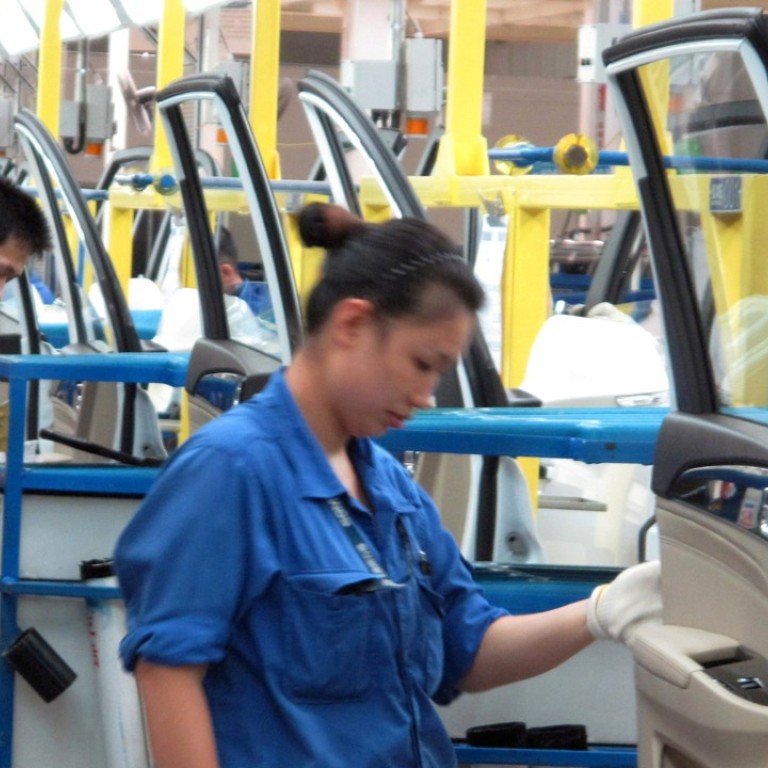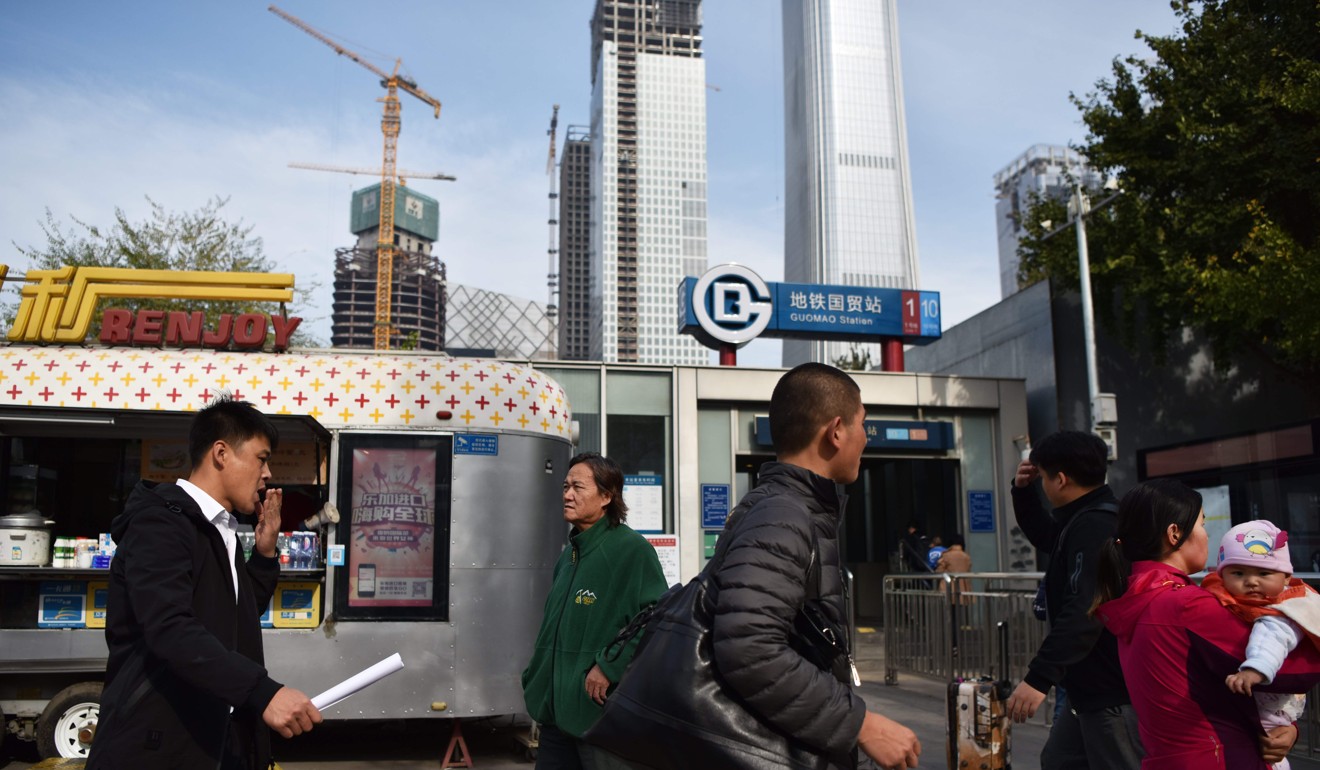
Is there safety from ‘grey rhinos’ in China’s economic numbers?
Analysts are looking to this week’s official data releases for signs the country is weaning itself off investment-led growth
A series of official economic indicators – from industrial output to consumer spending – released in the next few days is expected to show the world’s second-biggest economy is on a safe growth track, just months after Beijing warned of “grey rhinos” and “black swans” stalking the country.
A firmer economic footing would allow the Chinese leadership to put greater weight on tackling the country’s structural imbalances and focus less on headline growth, analysts said.
Chinese President Xi Jinping is expected to shift more of his attention to the economy now that he has cemented his authority within the Communist Party. Xi’s name was enshrined in the party’s constitution at the five-yearly party congress last month, putting him on a par with Mao Zedong and Deng Xiaoping.
This week’s monthly data release will give Xi and his advisers a gauge of the country’s overall economic health ahead of the annual economic work conference next month.
Among the figures to be released will be growth in fixed-asset investment, measuring Chinese spending on infrastructure and property.
Fixed-asset investment rose 7.5 per cent in the first nine months and a Bloomberg survey of economists forecasts that rate to slow to 7.3 per cent for October. It’s a long way from the 20.6 per cent growth reported in 2012, the 23.6 per cent posted in 2011 and the 23.8 per cent recorded in 2010, when the investment was a major driver of gross domestic product.
China is on track to meet its annual GDP target of “about 6.5 per cent” and analysts will be watching to see whether the government’s long-term efforts to ease the economy’s reliance on investment are yielding results.

Zhang Yiping, an analyst with China Merchants Securities in Shenzhen, said a growth model relying more on consumption instead of investment meant China’s expansion down the track would be stabler.
“China’s investment growth has already dropped to single digits from more than 20 per cent a few years ago, but there have been no big declines in GDP growth,” Zhang said, suggesting that consumption was taking up the slack.
Consumption contributed 64.5 per cent of the GDP growth in the first three quarters, while the share generated through investment fell to 32.8 per cent, according to the National Bureau of Statistics.
Investment-driven growth is one of the main forces behind China’s rapid build-up in debt which economists point to as a big source of danger for the country’s economy. That debt has been described as a “grey rhino” risk, one that is obvious to all but on which no action is taken.
But the authorities have tightened oversight of the financial sector to be more prepared to meet “black swan” risks, sudden and unpredictable dangers that pose big threats.
Six months after Xi ordered the creation of a super agency to oversee the sector, China last week announced the formation of the Financial Stability and Development Committee under the State Council, a new body with extensive powers to confront crises.
And China has only just emerged from a period of crisis – a year ago policymakers were preoccupied with the concerns about capital flight, a fall in the currency’s value and dimmer economic prospects.
But few now would see an easing in growth as cause for concern.
Standard Chartered Bank chief China economist Ding Shuang said an expected moderation in the fourth-quarter growth would be “healthy”.
“It’s largely a result of Beijing’s active policy adjustments, including financial deleveraging, environmental protection and property curbs,” Ding said.
Chinese lenders extended 663.2 billion yuan (US$99.87 billion) in new loans in October, or just over half the 1.27 trillion yuan reported for September. Aggregate social financing also shrank to 1.04 trillion yuan last month, down from 1.82 trillion yuan in September, showing a tightening in credit, the People’s Bank of China said on Monday.
China’s statistics bureau will release investment, industrial output and retail sales figures on Tuesday.

